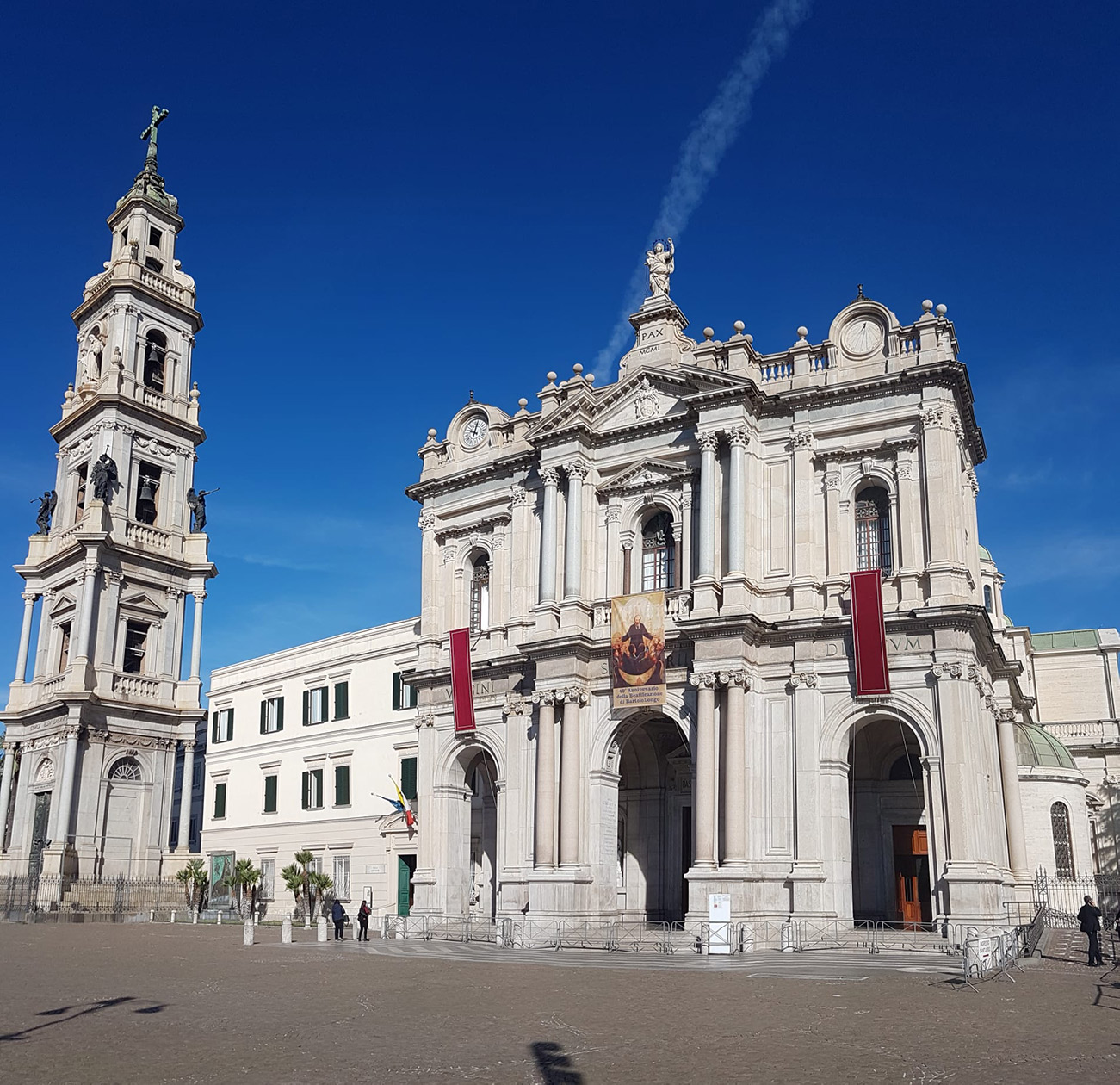It was an autumn afternoon, the 13th of November 1875, when the group of the faithful, who used to gather in the valley of Pompeii to pray the Rosary together with the Neapolitan Bartolo Longo, saw appearing a barrow usually used for the transport of manure. The carter, a certain Angelo Tortora, stopped in front of what was remaining of the church of SS. Salvatore, used as a parish for the very few souls living in the countryside at the feet of the Vesuvius, and disposed an square object wrapped in a blanket.

People were waiting for so long for the painting representing the Madonna of the Rosary, which Bartolo had promised them and which he purchased specifically in Naples. But when the bundle revealed what it was containing, it was such a disappointment: the canvas was gnawed by the woodworms and the painting in poor conditions. Even Bartolo was surprised, but the way, which had let him to that painting, kept by a nun of the Conservatorio del Rosario di Porta Medina, where father Radente, his confessor, directed him to, convinced him to keep it. However, he decided to restore it and the painting was given to the artist Guglielmo Galella, before being exhibited in the parish of Pompeii. But three years later, another intervention was necessary by the painter Federico Maldarelli, who replaced the original figure of Santa Rosa with Saint Catherine of Siena to whom, according to Dominican iconography, the Madonna is putting the crown. It is only later, in 1965, during a restoration, that the painting with several vicissitudes, has apparently been attributed to the great master Luca Giordano.
In the meantime, from the 8th of may 1876, next to the church of Salvatore, the construction of the Sanctuary dedicated to the Madonna of the Rosary started, thanks to the donations of the fundraiser “a penny a month” received, launched by Bartolo Longo. It was a project of the architect Antonio Cua, who directed free the work to build the temple completed in 1891. Then, Giovanni Rispoli embellished the new structure and created a façade, inaugurated in 1901, the year when, on 4th of May, Pope Leo XIII decided to make it a papal basilica.
That first sanctuary, with a Latin cross with a nave and an apse, had four side chapels and two in the cross vault. The complex structure was made of two outer chapels, at the sides of the main edifice and communicating with its central nave, but also equipped with separate entrances: the one on the left was named after Saint Catherine of Siena and there the painting was initially put, whereas the right one, which had replaced the parish church, was dedicated to the Santissimo Salvatore. The parish was rebuilt next to the Sanctuary, which in 1925 was embellished with an imposing campanile equipped with eight bells, 80 meters high and dominated by a seven meters high bronze cross of the architect Aristide Leonori. The campanile has five overlapping orders, with different art works, the last of which is surrounded by a panoramic terrace, reachable with an internal lift, from where you can admire an amazing panorama running down from the Apennines until the sea, to the gulf of Naples, extending until the close excavations of the ancient Pompeii, on the Vesuvius and on the Valley of Sarno.
There were many faithful flocking to Pompeii to visit the new Sanctuary, which soon became too narrow to welcome them. Therefore, in 1934, the architect Monsignor Spirito Maria Chiappetta launched a project of expansion. The works, concluded in 1939, restored a church five times bigger, with three naves, leaving a the origin the centre the original one, with a bigger apse and dome. The façade was embellished as well with new elements and ornaments.
Visited by Pope John Paul II in 1979, by Pope Benedict XVI in 2008 and by Pope Francis in 2015, the Sanctuary welcomes every year more than four millions of faithful. More particularly on 8th of May and on the first Sunday of October, for the recitation of the Supplication to the Madonna created by the blessed Bartolo Longo, to whom the monument of the sculptor Domenico Ponzi has been dedicated, and erected on the big square.
Copyright video, foto e testi © 2020




Comments powered by CComment